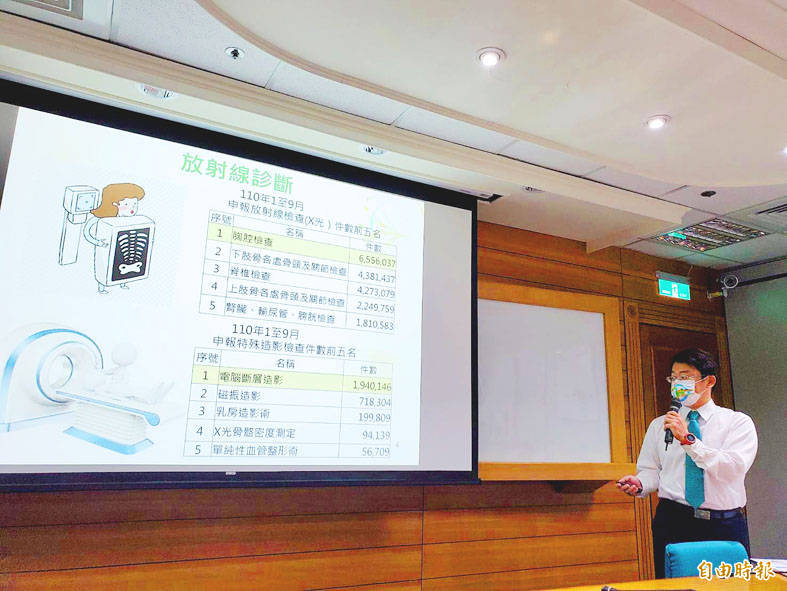《TAIPEI TIMES》 Exposure to radiation in diagnostics rises: NHIA

National Health Insurance Administration committee member Lin Yo-chun gives a presentation on radiological diagnosis in Taipei yesterday. Photo: Lin Hui-chin, Taipei Times
LOW LEVELS: Only a fraction of those who were exposed to medical radiation received doses that a US doctors’ association considers potentially harmful, an expert said
By Lin Hui-chin / Staff reporter
The average exposure to medical radiation of Taiwanese has slightly increased to 3.44 millisievert (mSv) this year from 3.11 mSv in 2016, the National Health Insurance Administration (NHIA) said yesterday.
Despite the increase, the average amount remains much lower than 100mSv, the maximum amount suggested as safe by the American Association of Physicists in Medicine, it said.
The agency made the remarks as it introduced a new function on its mobile app, My Health Bank, that allows users to estimate their annual exposure to medical radiation.
People are exposed to several natural sources of radiation, such as cosmic radiation, and radiation released from the Earth and radioactive particles in food, NHIA Director-General Lee Po-chang (李伯璋) said.
This adds to radiation from medical exams, Lee said, adding that different diagnostics release different amounts of radiation.
The overall amount of exposure correlates to the risk of getting cancer and other health conditions, Lee said.
Lin Yu-chun (林右鈞), a radiation specialist at NHIA, said that 8.07 million Taiwanese underwent exams that exposed them to radiation on an annual average from 2016 to last year.
Those who underwent such diagnostics did so 4.14 times on an annual average, with an exposure of 3.3mSv, Lin said.
The average exposure grew from 3.11mSv in 2016 to 3.47mSv last year, but had as of September slightly dropped to 3.44mSv, he added.
NHIA data showed that in the first nine months of this year, 6.55 million chest X-ray exams were performed, as well as 4.38 million X-ray exams on the lower limbs and 4.27 million on the spine.
The amount of radioactive exposure varies among those exams, he said, adding that the association considers annual exposure of less than 100mSv to be safe.
Lin said that 51.3 percent of the 8.03 million people who were last year exposed to radiation during medical exams received less than 1mSv.
Only 0.02 percent of them, or 1,232 people, were exposed to more than 100mSv, he said, adding that most of the high-exposure patients received radiation treatments, he said.
新聞來源:TAIPEI TIMES















